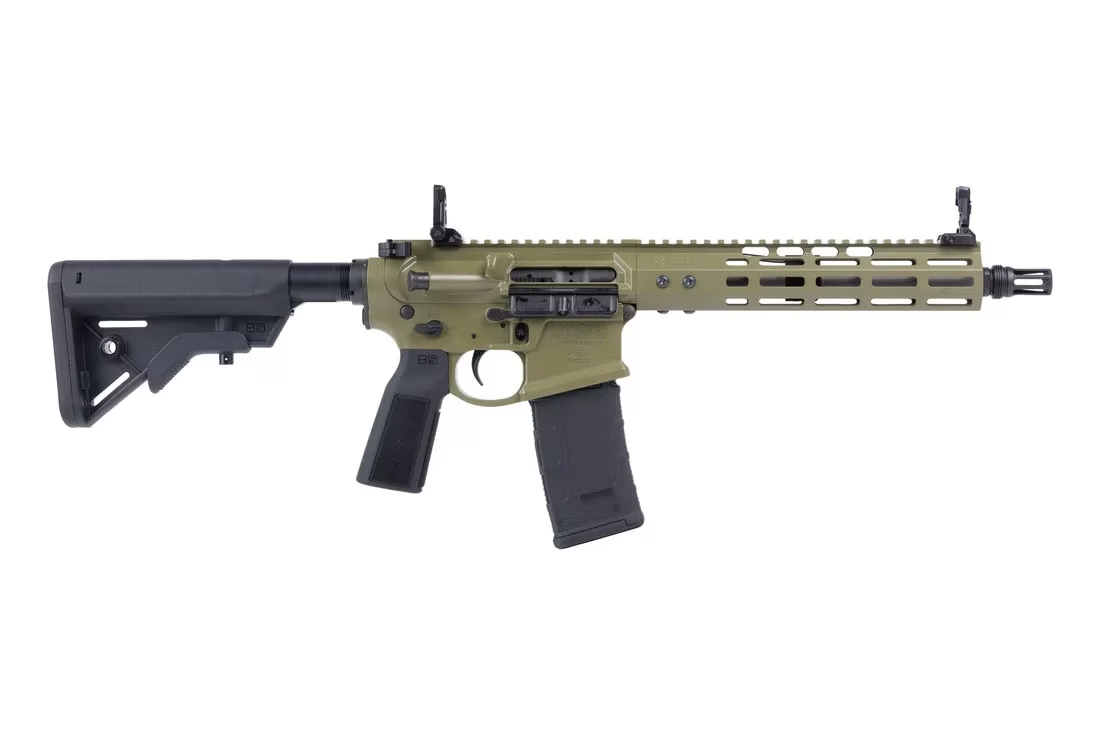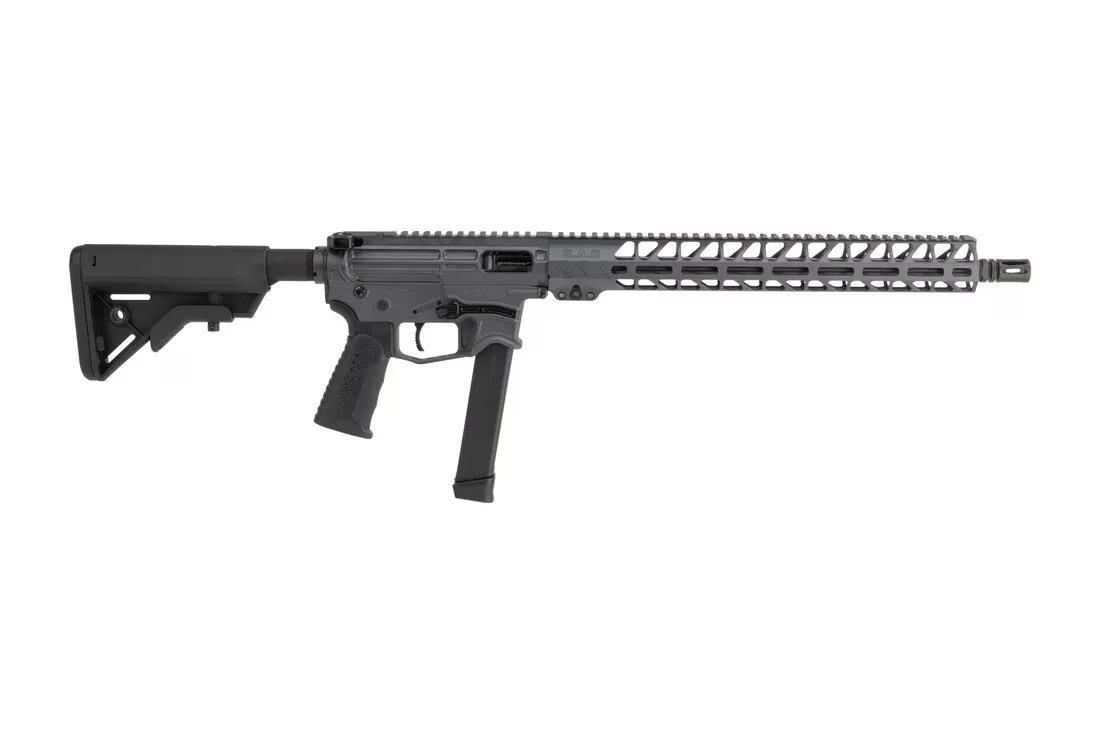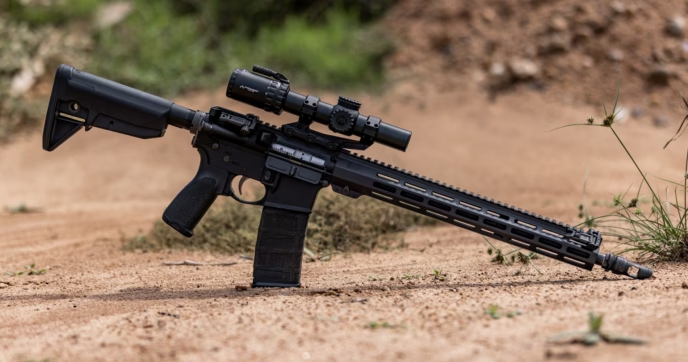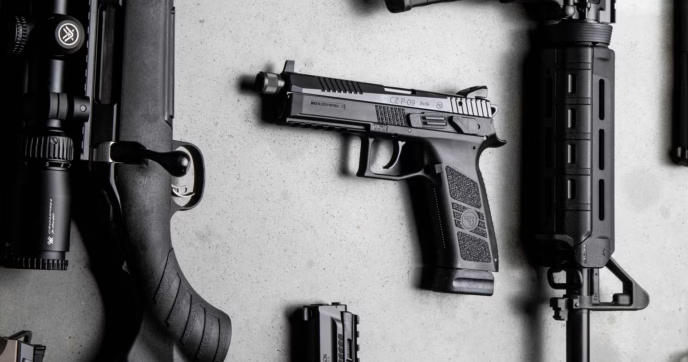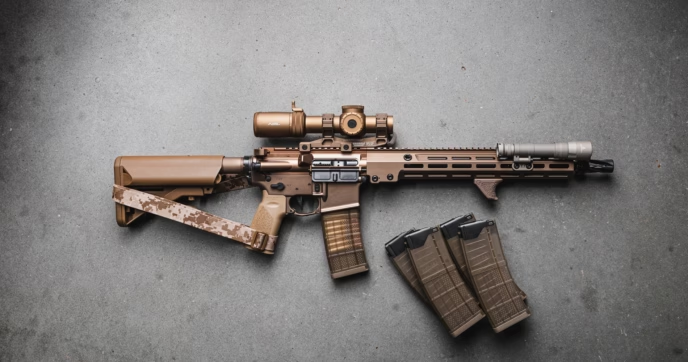The caliber of your rifle plays a crucial role in determining its effectiveness in any application—especially home defense. When deciding on a caliber for your next home defense build there are several key considerations to think about, with terminal ballistics, recoil, cost, and availability being chief amongst them.
Despite there being several viable calibers that are well-suited for home defense, options like .300 Blackout and 9mm stand out as some of the most popular, offering excellent performance in such applications.
While they perform very well in close quarters applications like home defense it’s important to recognize that each option has its own distinct characteristics to consider. As such, understanding how each one performs is paramount to ensuring you’ve chosen the one that’s the best fit for you.
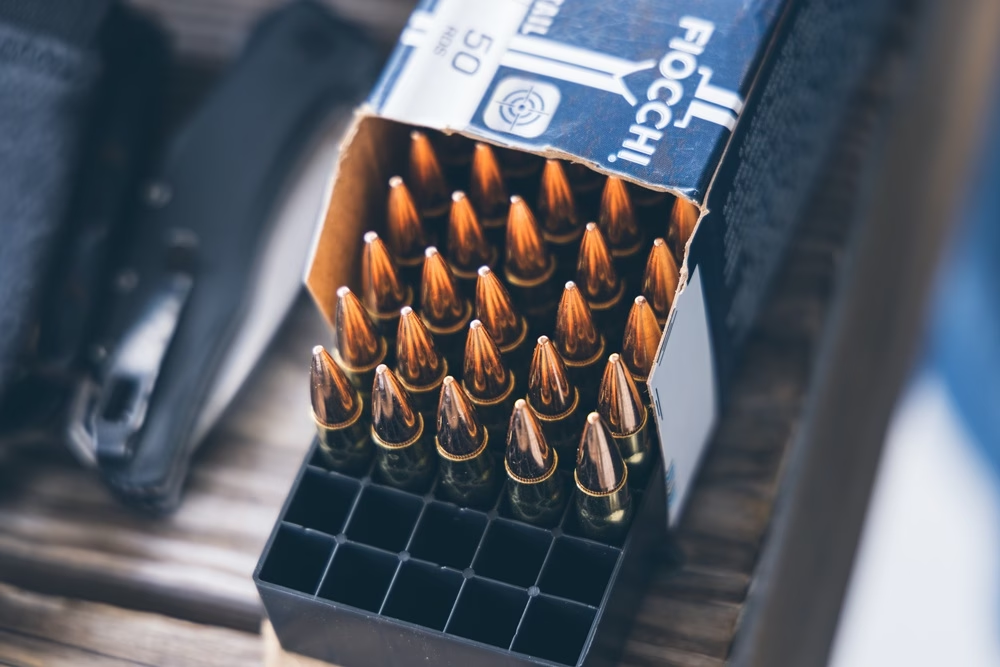
.300 Blackout: Overview
Developed by AAC (Advanced Armament Corporation) in collaboration with Remington, .300 Blackout is a unique cartridge designed for the AR-15 platform that was introduced in 2011. This cartridge was made specifically for use in shorter barrels and while suppressed. Unlike 5.56 NATO, which requires longer barrels to reach an effective terminal velocity, .300 Blackout excels in compact rifle and pistol configurations, making it a solid option for CQB and home defense. Because of how well it performs, it’s become one of the main calibers associated with the AR-15, but we go more into detail on how it compares with others in our guide, “5.56 vs. .300 Blackout”.
Ballistic Performance
.300 Blackout fires a .30 caliber projectile, which is significantly larger than the .22 caliber round used in 5.56 NATO. Standard supersonic loads usually reach a muzzle velocity of around 2,000 FPS (feet per second) and produce upwards of 1,500+ ft-lbs of muzzle energy. This makes .300 Blackout very effective at close range, as it provides an immense amount of stopping power.
Compared to other intermediate cartridges, it doesn’t perform as well when shooting at distant targets. Because of its larger bullet size, .300 Blackout loses its velocity quickly, causing a greater amount of bullet drop at longer ranges. But, within personal/home defense distances, it delivers a substantial amount of energy on target, far more than 5.56 NATO or 9mm.
Suppressibility
Another key benefit of running a .300 Blackout rifle is how easily they can be suppressed. Suppressors are designed to dampen the sound signature of a firearm after firing, but not every caliber suppresses the same. High velocity rounds like 5.56 NATO, for instance, will still be loud enough to permanently damage your hearing, even when suppressed.
.300 Blackout, on the other hand, suppresses much easier, and when using sub-sonic ammunition, they can even be hearing safe. In a defensive scenario, you more than likely won’t have time or won’t even be thinking about ear protection, making suppressors a more-than-worthwhile upgrade for your home defense setup.
AR-15 Parts Interchangeability
Something else to note regarding .300 Blackout is its compatibility with standard AR-15 components, as the primary difference is the barrel. .300 Blackout AR-15s use the same bolt carrier group, upper and lower receivers, and even the same magazines as standard 5.56 ones. Still, while .300 Blackout cartridges will seat and feed through standard 5.56 mags with no issues, you can opt for one of the many dedicated .300 Blackout mags, which come with enhanced followers to ensure reliability.
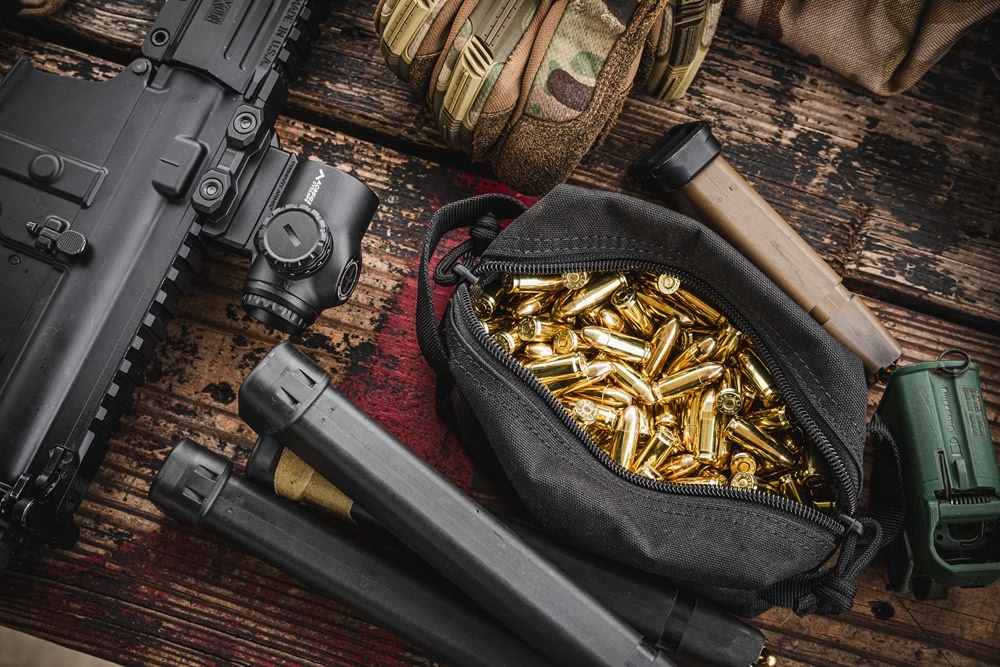
9mm: Overview
Designed for use in handguns, 9mm has long been an incredibly popular cartridge for both defensive and recreational shooting disciplines ever since its introduction over a century ago. Although it’s most recognizable for being one of the most common chamberings for handguns, it’s widely used in pistol caliber carbines like the AR-9, which can greatly enhance a user’s accuracy, magazine capacity, and overall control of the firearm, making them a solid contender for home defense.
Ballistic Performance
Since 9mm was originally designed for use in handguns, it goes without saying that it performs considerably well when fired out of a shorter barrel. Typically, 9mm PCC options have barrel lengths that can span anywhere from 4 to 16 inches. Out of shorter 4- to 8-inch barrels, 9mm can have a muzzle velocity of around 1100 to 1300 FPS while delivering around 350 to upwards of 500 ft-lbs of muzzle energy on target, depending on the ammunition you use.
While 9mm lacks the long-range capabilities of .300 Blackout, it is highly effective as a home defense round, as it has a plethora of dedicated defensive loads available that enhance its stopping power and reduce the risk of overpenetration. Just keep in mind that select hollow point rounds can be a bit finnicky when cycling, so it’s best to perform function checks and range tests to see if your ammo is compatible with your setup.
Capacity
Depending on the 9mm platform you use, your capacity can vary. PCCs most often come with either a 30- or 33-round magazine, with many models using common pistol pattern magazines like double stack GLOCK mags. Platforms like the AR-9 and B&T APC9/GHM9 are often configured this way, allowing you to easily switch between extended and standard full-size 9mm magazines with no issues.
Suppressibility
9mm firearms pair particularly well with suppressors. By design, 9mm cartridges are naturally sub-sonic and produce low chamber pressures. Just like with .300 Blackout, with the right load and suppressor pairing, you can easily achieve a hearing safe setup, which is ideal for shooting in enclosed spaces.
.300 Blackout vs. 9mm: Comparison
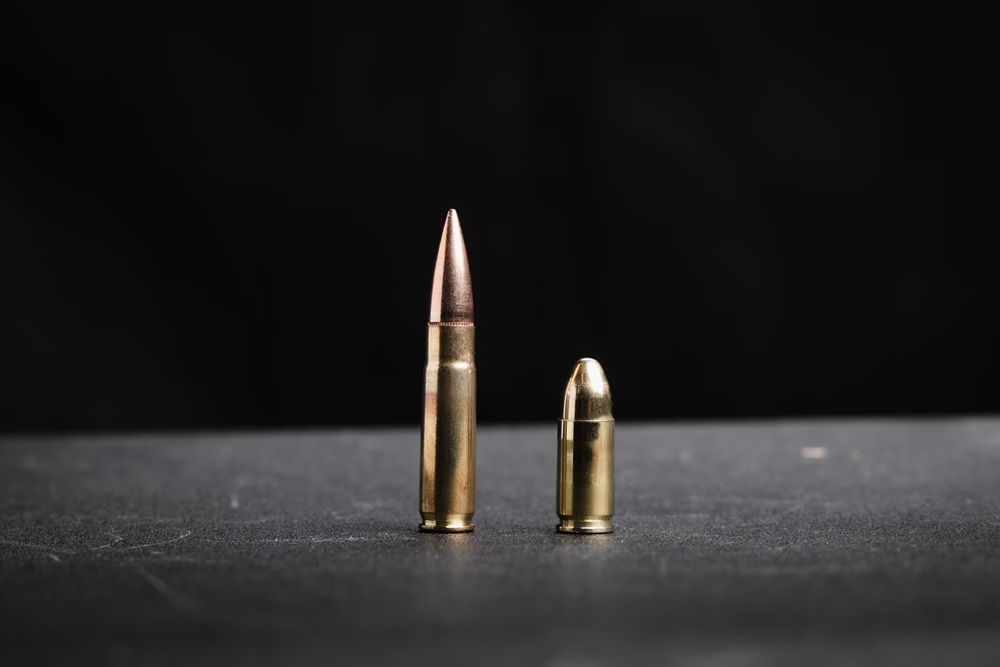
Power
Compared to 9mm, .300 Blackout is, by far, more powerful, producing much more muzzle energy due to its larger powder charge. 9mm doesn’t produce nearly as much muzzle energy, since it’s a pistol cartridge by design. Still, with both cartridges, it’s important to consider over-penetration—when a bullet passes through a soft target and maintains terminal velocity.
Since .300 Blackout is more powerful, it has a higher risk of overpenetration. 9mm, comparatively doesn’t have as high a risk, but it still needs to be considered, even when using hollow point ammunition. If you were to miss your target and your round hit light cover like drywall, the hollow point bullet could become packed with the cover material, preventing it from expanding, and essentially turning it into something akin to FMJ ammunition.
So, regardless of which caliber you opt for, it’s crucial that you remain mindful of your target and what’s beyond it, since both calibers have more than enough energy to over-penetrate a target.
Recoil Impulse
Between the two, 9mm generally has a softer recoil impulse compared to .300 Blackout, making PCCs easier to control, in most instances. However, the recoil impulse of a 9mm firearm is largely dependent on the type of gas system it uses, as well as the firearm’s design. For instance, 9mm compact handguns have a sharper, more pronounced recoil impulse because of their smaller size and fewer points of contact, making PCCs the go-to choice for many when discussing home defense.
AR-9s most often use a direct blowback design, which can kick almost like a 5.56 AR-15 in some cases. Other platforms use this design as well, but to get the softest recoil impulse possible, many manufacturers incorporate some form of delayed blowback into their PCCs. Delayed blowback systems allow the chamber pressure to drop significantly before the bolt unlocks, creating a softer shooting experience. For example, the CMMG Banshee is an AR-9 that can come with their Radial Delayed Blowback system, which has significantly less recoil than your standard direct blowback PCCs.
This isn’t to say that .300 Blackout is totally uncontrollable—with the right setup, a .300 Blackout rifle can be very wieldy and maneuverable, especially when using the right stance, grip technique, and gas tuning. It’s just that, comparatively, 9mm wins out in this regard.
Accuracy and Range
Both .300 Blackout and 9mm offer exceptional accuracy at close range, but as far as distance is concerned, .300 Blackout’s extra power gives it an effective range of around 450 yards, while 9mm is only effective out to around 50 yards—150 yards if you’re using a 16-inch barrel.
For home defense though, your typical target engagement distance is most likely going to be within 10 yards, maybe a bit more at the most, so long-range performance isn’t really that much of a concern. What can be a concern though, is your optic zero distance. We recommend using a 25-yard zero distance for your setup, since it doesn’t have as much POI shift at close range compared to other popular options like 50- or 100-yard zeroes.
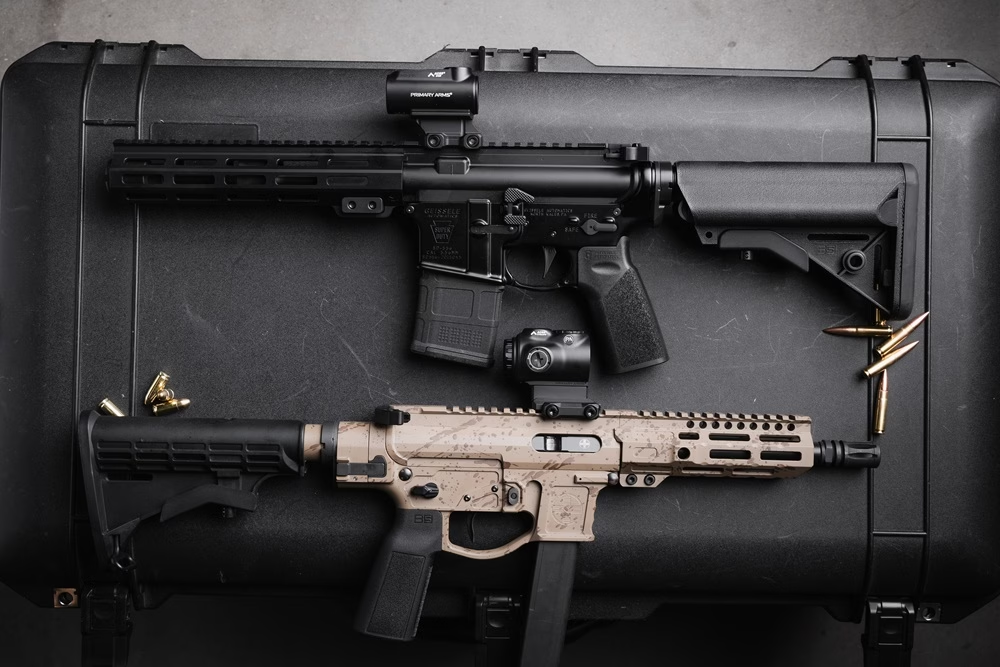
Ammunition Cost and Firearm Availability
Though ammunition price varies, 9mm ammo is often cheaper than .300 Blackout ammo. For training, standard FMJ rounds tend to hover around $.30 a round for 9mm, while .300 Blackout FMJ ammo typically costs around $.70 to $1.00 per round. Meanwhile, defensive and sub-sonic loads can range anywhere from $.40 to $1.50 a round for 9mm, and around $.90 to upwards of $2.50+ per round for .300 Blackout—making 9mm the most affordable choice, by far.
Regardless of which caliber you choose, you won’t have a tough time finding ammunition as they’re some of the most common calibers available. There’s no shortage of rifles either, as popular rifles like the AR-15, SIG MCX, and FN SCAR are all available in .300 Blackout chamberings, while popular PCCs like the AR-9, MP5, and APC9/GHM9 are just a few of the many notable 9mm PCC options available.
Conclusion
Both .300 Blackout and 9mm excel in close-range applications, making them solid choices for home defense. That said, it’s impossible to crown one caliber as the ‘best’ since they each have their own set of strengths.
As an intermediate rifle cartridge, .300 Blackout offers the most in terms of stopping power, with it packing the most punch, even when in a compact package—plus they cycle in standard AR-15 magazines too. 9mm strikes a good balance between affordability and utility, offering a softer recoil impulse, and good muzzle energy to make it effective for home defense. Even further, both can be suppressed to a hearing safe sound signature when using the right ammo and suppressor combination.
Ultimately, when choosing a caliber for home defense, the best caliber is the one that best aligns with your needs and preferences. Regardless of which one you go with though, remember that shot placement and overpenetration risks are present with either caliber. So long as you take these factors into consideration and continue to train with your setup, you’ll be good to go, no matter which caliber you choose.
If you’re on the fence about using a rifle setup to defend your home, check out our guide, “Pistols for Home Defense”. It goes over the benefits of using pistols for home defense, as well as different makes and models to help get you started in your search.
